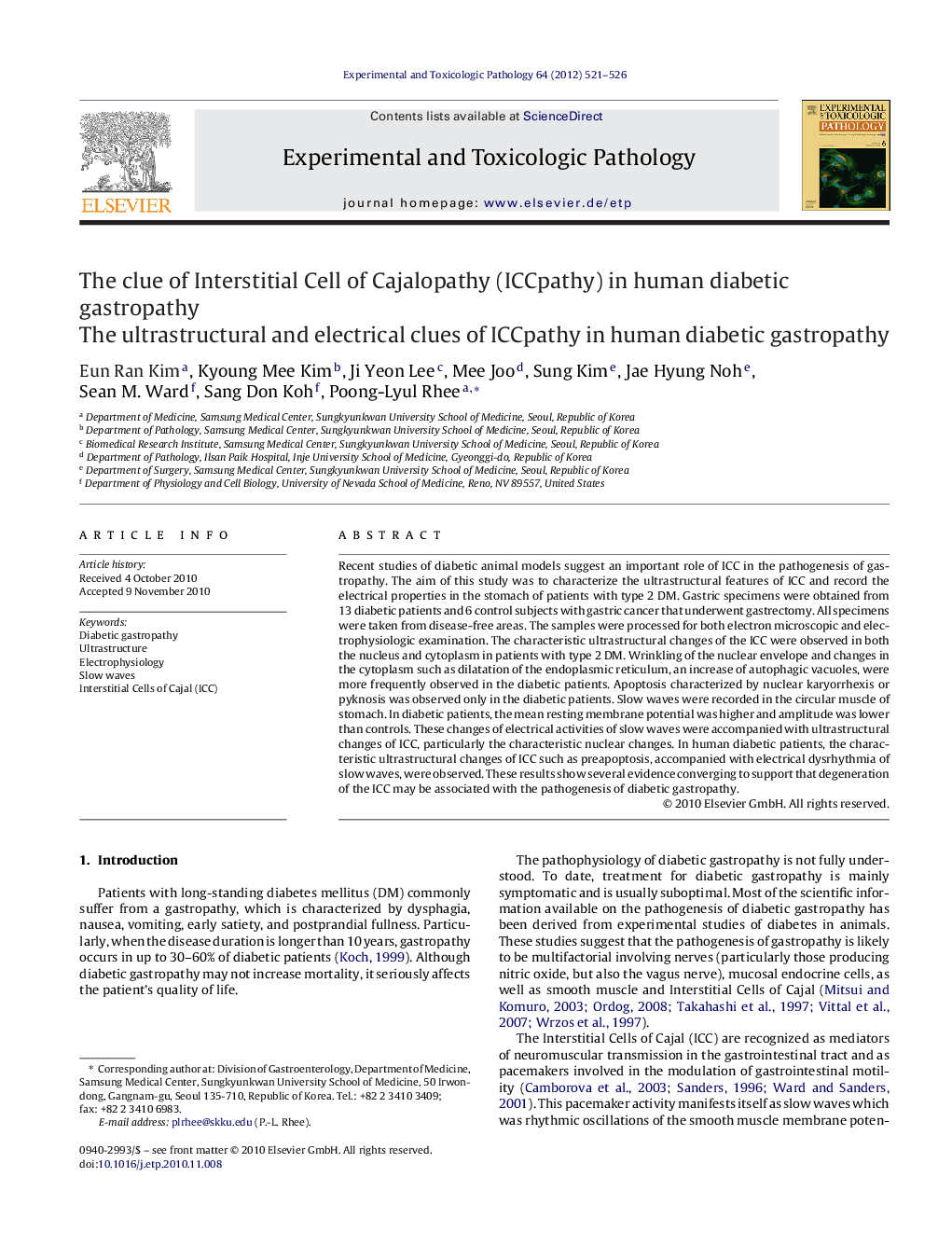| Article ID | Journal | Published Year | Pages | File Type |
|---|---|---|---|---|
| 2499061 | Experimental and Toxicologic Pathology | 2012 | 6 Pages |
Recent studies of diabetic animal models suggest an important role of ICC in the pathogenesis of gastropathy. The aim of this study was to characterize the ultrastructural features of ICC and record the electrical properties in the stomach of patients with type 2 DM. Gastric specimens were obtained from 13 diabetic patients and 6 control subjects with gastric cancer that underwent gastrectomy. All specimens were taken from disease-free areas. The samples were processed for both electron microscopic and electrophysiologic examination. The characteristic ultrastructural changes of the ICC were observed in both the nucleus and cytoplasm in patients with type 2 DM. Wrinkling of the nuclear envelope and changes in the cytoplasm such as dilatation of the endoplasmic reticulum, an increase of autophagic vacuoles, were more frequently observed in the diabetic patients. Apoptosis characterized by nuclear karyorrhexis or pyknosis was observed only in the diabetic patients. Slow waves were recorded in the circular muscle of stomach. In diabetic patients, the mean resting membrane potential was higher and amplitude was lower than controls. These changes of electrical activities of slow waves were accompanied with ultrastructural changes of ICC, particularly the characteristic nuclear changes. In human diabetic patients, the characteristic ultrastructural changes of ICC such as preapoptosis, accompanied with electrical dysrhythmia of slow waves, were observed. These results show several evidence converging to support that degeneration of the ICC may be associated with the pathogenesis of diabetic gastropathy.
